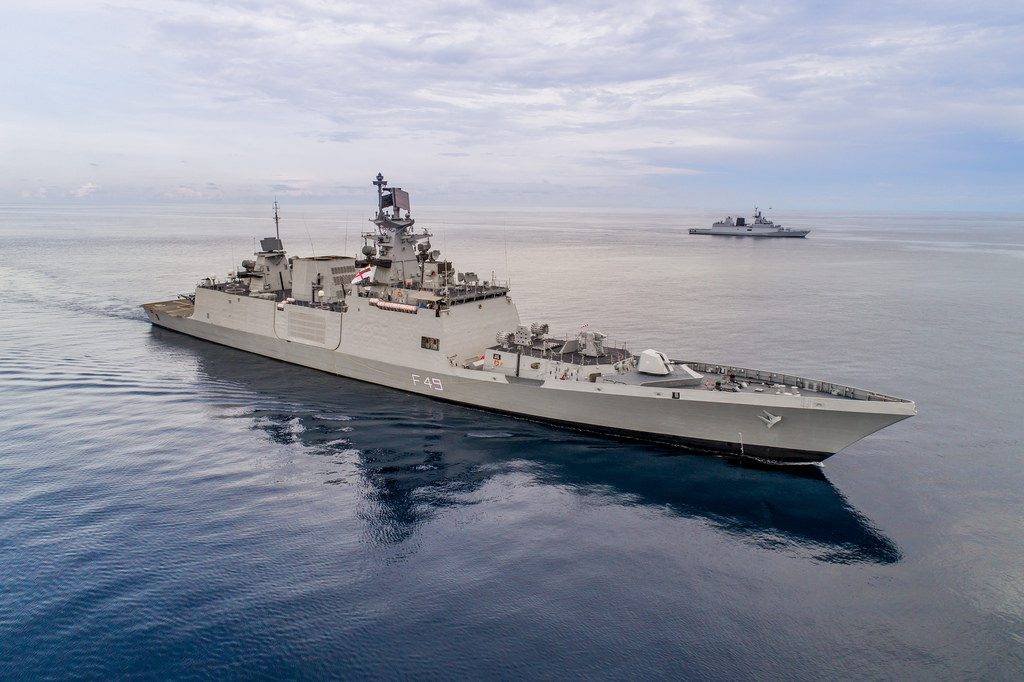A destroyer is typically a larger and more heavily armed vessel that is designed to provide protection to other ships in a fleet, while a frigate is generally considered to be a smaller, less powerful warship. Destroyers are generally used for antisubmarine warfare, air defence, and surface combat, while frigates are typically used in convoy escort, patrol and reconnaissance, and search and rescue operations. The size and armament of a destroyer or frigate will vary between countries, as will their primary roles and duties.
What is a Frigate?
A frigate is a type of naval warship that is typically smaller and more agile than a destroyer, but larger and more heavily armed than a corvette. The length of a frigate can range from around 300-500 feet (90-150 meters), with a beam (width) of around 40-50 feet (12-15 meters). Frigates typically have a displacement (the weight of the ship and its contents) of 4,000-8,000 tons, although some newer classes of frigate can be much larger, with a displacement of over 10,000 tons.
Frigates are often used for tasks such as patrolling and escorting other ships. They are also sometimes used for humanitarian and disaster relief operations, and for enforcing fisheries laws.
Frigates are designed to be able to operate independently for long range and extended periods of time, and they typically have a range of onboard amenities to support this capability. They are usually equipped with a variety of weapons systems, including guns and missiles, and may also carry unmanned aerial vehicles (UAVs) for surveillance and reconnaissance missions. Some modern frigates are also equipped with advanced anti aircraft systems to protect against enemy aircraft and missiles.
The power of a frigate depends on a variety of factors, including its size, the weapons and equipment it carries, and its specific design and capabilities.
In terms of raw firepower, they are typically less heavily armed than destroyers, which are generally the mainstay of a navy’s surface combatant force. However, frigates are often used in roles that require a balance of firepower, endurance, and agility, and they are capable of operating independently for extended periods of time.
What is a Destroyer?
A destroyer is a type of naval warship that is smaller and more agile than a cruiser, but larger and more heavily armed than a frigate. The length of a destroyer can range from around 500 feet (150 meters) to over 600 feet (180 meters), with a beam (width) of around 50-60 feet (15-18 meters). Destroyers typically have a displacement (the weight of the ship and its contents) of 8,000-10,000 tons, although some newer classes of destroyer can be much larger, with a displacement of over 15,000 tons. Despite their size, destroyers are designed to be agile and fast, with a top speed of around 30 knots (35 mph).
Destroyers are primarily used to accompany bigger ships in a fleet, convoy or battle group, and protect them against close-ranged opponents, enemy aircraft and submarines.
They are usually equipped with a variety of weapon systems, including, guided missiles, cruise missiles, torpedoes, anti ship weapons. Modern destroyers can also carry helicopters, which helps with anti-submarine warfare.
Destroyers are considered to be a key component of a navy’s surface combatant force, and they are usually considered to be among the most powerful and capable ships in a navy’s arsenal.
Frigate vs Destroyer
In general, Both frigates and destroyers can be equipped with a variety of weapons systems, including guns, missiles, and torpedoes, and both types of ship can operate in a variety of roles, depending on their specific design and the weapons and equipment they carry.
Destroyers are heavier, heavily armed, more capable of engaging in direct combat and are faster than Frigates with a top speed of around 30 knots while frigates are smaller, have less firepower and are less costly to build.


